Seal Salamander
- March 12, 2024
- 0 comment
The Seal Salamander (Desmognathus monticola) is a captivating species of salamander native to the eastern United States, primarily found within the Appalachian Mountains. This species is a member of the family Plethodontidae, the lungless salamanders, which breathe through their skin and the lining of their mouth. The Seal Salamander’s habitat, behavior, and conservation status offer a fascinating glimpse into the adaptability and ecological significance of amphibians in forest ecosystems.

| Characteristic | Description |
|---|---|
| Scientific Name | Desmognathus monticola |
| Common Name | Seal Salamander |
| Family | Plethodontidae (Lungless Salamanders) |
| Habitat | Cool, clear streams and springs within deciduous forests, preferably with rocky substrates. Found from lowlands to upland regions within the Appalachian Mountains. |
| Physical Description | Medium-sized, ranging from 4 to 7 cm in length. Dark brown to grayish body color with lighter spots or mottling. Features a laterally compressed tail and well-developed limbs. |
| Diet | Carnivorous, feeding on invertebrates such as insects, spiders, and annelids. |
| Behavior | Exhibits both diurnal and nocturnal activity. Adults are predominantly terrestrial but adept in water. Males show territorial and complex mating behaviors. |
| Reproduction | Females lay eggs in hidden, moist locations near water and guard them until hatching. Larvae are aquatic and undergo metamorphosis into terrestrial juveniles. |
| Conservation Status | Listed as Least Concern by the IUCN. Faces threats from habitat destruction, pollution, and climate change. |
| Ecological Role | Acts as both predator and prey within its ecosystem. Helps control insect populations and serves as an indicator of ecosystem health. |
Physical Description
Desmognathus monticola typically measures between 4 to 7 centimeters in length, making it a medium-sized salamander within its genus. It possesses a robust body, with coloration that varies from dark brown to grayish, and is peppered with lighter spots or mottling, which aids in camouflage among the leaf litter and streambeds. A distinctive feature is its tail, which is laterally compressed, aiding in its aquatic lifestyle. Unlike many salamanders, Seal Salamanders have relatively well-developed limbs, reflecting their semi-terrestrial nature.
Markings
The skin of Seal Salamanders is often adorned with lighter spots or mottling, creating a distinctive pattern that varies in both pattern and intensity among individuals. This unique patterning serves as an effective camouflage, allowing them to blend seamlessly into their natural habitat and evade predators.
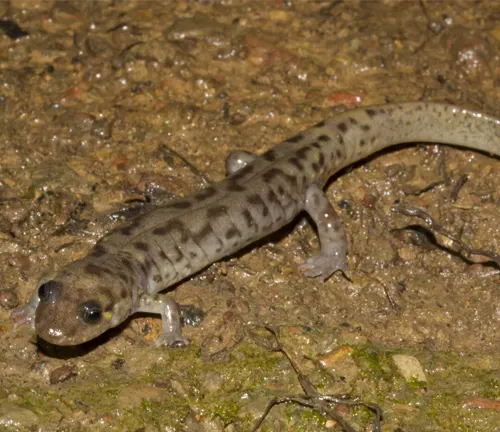

Skin Texture
Seal Salamanders, as members of the Plethodontidae family, possess skin that is both smooth and moist, a characteristic vital for their unique method of respiration. This moisture-rich skin facilitates the exchange of gases, allowing them to effectively breathe through their skin, a process essential for their survival in their aquatic and terrestrial environments.
Limbs
Seal Salamanders boast relatively well-developed limbs, featuring four distinct and sturdy legs that endow them with remarkable agility. This anatomical trait enables seamless navigation across both terrestrial and aquatic environments, allowing them to adeptly pursue prey and evade predators in a variety of settings.

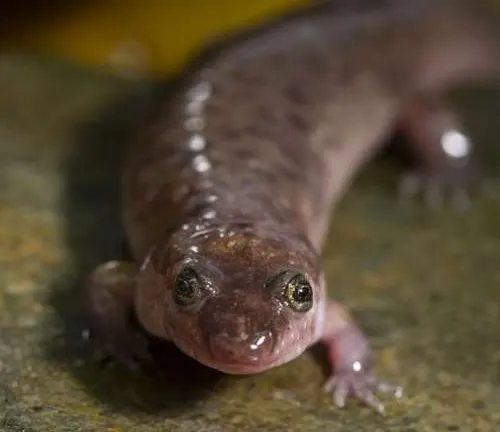
Head
The head of the Seal Salamander is proportionally sized to its body, showcasing a somewhat flattened appearance that is well-suited to its semi-aquatic lifestyle. It features a wide mouth, an essential adaptation that facilitates the consumption of a variety of invertebrate prey, aligning with its carnivorous dietary habits.
Habitat and Distribution
Seal Salamanders inhabit cool, clear streams and springs nestled within deciduous forests, often at elevations ranging from lowlands to upland regions. They prefer rocky substrates where water flow is moderate, providing crevices for hiding and hunting. Their presence is closely tied to the health of their aquatic and terrestrial environments, making them excellent bioindicators of ecosystem integrity.
Reproduction and Lifecycle
The reproductive strategies of Desmognathus monticola are unique. Females lay their eggs in hidden, moist locations near water.

The eggs are guarded diligently by the female until they hatch, showcasing an unusual level of parental care among amphibians. The larvae are fully aquatic and undergo metamorphosis into terrestrial juveniles, eventually maturing into adults capable of traversing both environments. This lifecycle highlights the salamander’s adaptability to the dynamic conditions of its habitat.
Diet and Behavior
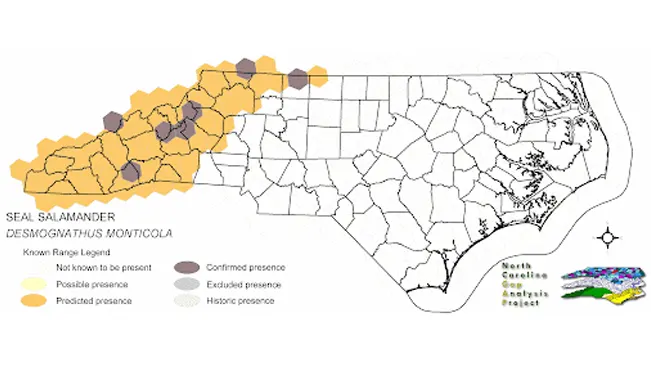
Seal Salamanders are carnivorous, feeding on a variety of invertebrates such as insects, spiders, and annelids. They exhibit both diurnal and nocturnal activity, depending on environmental conditions such as temperature and humidity. Predominantly terrestrial as adults, they are adept at navigating both land and water in search of food. During breeding season, which spans spring to early summer, males become territorial and exhibit complex mating behaviors to attract females.
Territoriality
Especially during the breeding season, male Seal Salamanders become territorial, defending specific areas against intruders to attract females and secure breeding opportunities.
Nocturnal and Diurnal Activity
They exhibit both nocturnal and diurnal behaviors, though their activity levels can significantly depend on environmental conditions such as temperature and humidity. They are more likely to be active during moist, cool conditions.
Carnivorous Diet
Seal Salamanders are carnivorous, actively hunting a variety of invertebrates such as insects, spiders, and annelids. They use a sit-and-wait strategy or actively forage for prey.
Predator Avoidance
When threatened, they may exhibit a range of predator avoidance tactics, including remaining still to avoid detection, fleeing, or employing a distinctive tail-wagging behavior to distract predators.
Breeding Behaviors
During the breeding season, males display complex mating behaviors, which may include physical displays, territory defense, and guiding females to suitable egg-laying sites.
Parental Care
Females demonstrate a rare level of parental care for amphibians, guarding their eggs against predators and ensuring they remain moist until hatching.
Aquatic Larval Stage
After hatching, the larvae are fully aquatic and undergo a period of growth in the water, where they exhibit behaviors adapted to aquatic survival, including swimming and hiding among aquatic vegetation or debris.
Metamorphosis
Upon reaching a certain size and developmental stage, larvae undergo metamorphosis, transitioning to a more terrestrial lifestyle. This process includes significant physiological and behavioral changes.
Moisture-Seeking Behavior
Being lungless salamanders that breathe through their skin, Seal Salamanders actively seek out moist environments to maintain skin moisture necessary for respiration.
Hibernation
In regions with colder winters, Seal Salamanders may hibernate to survive the cold months. This involves seeking out underground refuges where temperatures remain above freezing.
Ecological Role
As both predator and prey, Seal Salamanders play a significant role in their ecosystems. They help control insect populations, while also serving as food for larger predators such as birds and snakes. Their sensitivity to environmental changes makes them valuable indicators of ecosystem health, aiding conservationists in monitoring the impact of human activities on natural habitats.
Conservation Status
Currently, the Seal Salamander is listed as Least Concern by the International Union for Conservation of Nature (IUCN), indicating a stable population across its range. However, it faces threats from habitat destruction, pollution, and climate change. Conservation efforts focus on preserving water quality and forest habitats, crucial for the survival of this and many other amphibian species.
Different Species

Allegheny Mountain Dusky Salamander (Desmognathus ochrophaeus) – Found in the northeastern United States, this species prefers forested streams and is known for its ability to survive in both aquatic and terrestrial environments.
Northern Dusky Salamander (Desmognathus fuscus) – Distributed throughout the eastern United States, it is adaptable to a variety of habitats, from streams to moist forests.
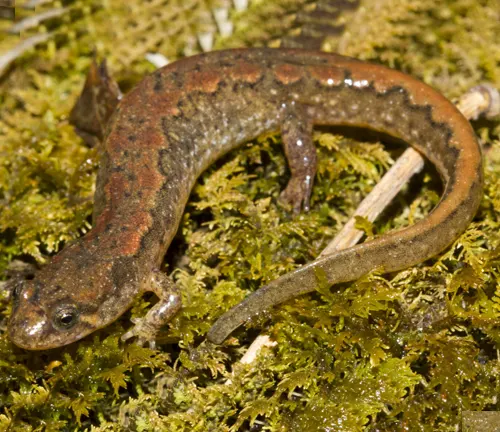

Southern Dusky Salamander (Desmognathus auriculatus) – Native to the southeastern United States, this species is often found in wet, forested areas, demonstrating a preference for slower-moving waters.
Blackbelly Salamander (Desmognathus quadramaculatus) – As one of the largest species in the genus, it inhabits the mountain streams of the southeastern U.S., where it is a top predator in its aquatic ecosystem.
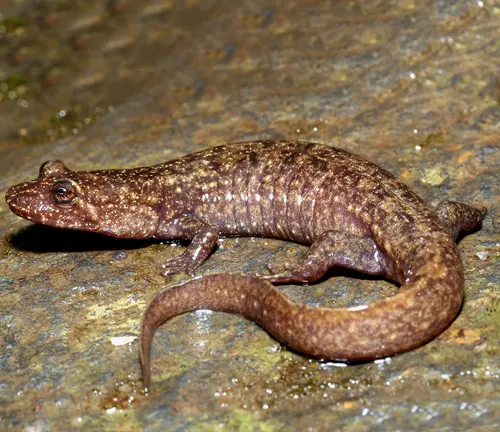

Eastern Newt (Notophthalmus viridescens) – Though not a species of Desmognathus, it’s worth mentioning due to its prevalence in similar habitats and its distinctive life stages, including an aquatic adult stage and a terrestrial juvenile phase known as the “red eft.”
Spotted Dusky Salamander (Desmognathus conanti) – This species can be found in the southeastern United States, thriving in moist, wooded areas near streams and springs.
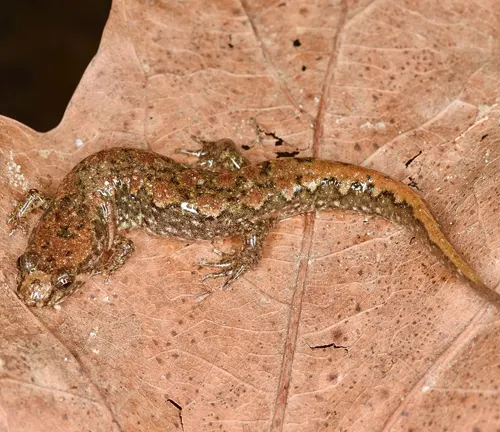
Conclusions
In conclusion, the Seal Salamander is a remarkable species that exemplifies the diversity and ecological importance of amphibians. Its study and conservation are essential not only for the species’ survival but also for the health of the ecosystems it inhabits. Protecting the Seal Salamander and its habitat contributes to the broader efforts of preserving biodiversity and ensuring the resilience of forest ecosystems in the face of environmental challenges.
Frequently Asked Questions (FAQs)
- What is a Seal Salamander?
The Seal Salamander is a species of lungless salamander native to the eastern United States, known for its semi-aquatic lifestyle and preference for cool, clear streams and springs within deciduous forests. - How do Seal Salamanders breathe?
Seal Salamanders are part of the Plethodontidae family, meaning they are lungless and breathe through their skin and the lining of their mouth, which requires them to live in moist environments. - What do Seal Salamanders eat?
They are carnivorous, primarily feeding on a variety of invertebrates such as insects, spiders, and annelids. - How big do Seal Salamanders get?
Adult Seal Salamanders typically range from 4 to 7 centimeters in length. - Where can I find a Seal Salamander?
They are found in the Appalachian region of the eastern United States, especially in areas with cool, clear streams, springs, and a rocky substrate. - Are Seal Salamanders nocturnal?
Seal Salamanders can be both nocturnal and diurnal, with their activity levels influenced by environmental conditions such as temperature and humidity. - How do Seal Salamanders reproduce?
Females lay eggs in moist locations near water. The eggs are then guarded by the female until they hatch. The larvae are aquatic and undergo metamorphosis into terrestrial juveniles. - What are the threats to Seal Salamanders?
They face threats from habitat destruction, pollution, and climate change, which can impact their aquatic and terrestrial habitats. - Is the Seal Salamander endangered?
The Seal Salamander is currently listed as Least Concern by the IUCN, indicating a stable population, but it still faces environmental threats that could impact its status. - Why are Seal Salamanders important?
As both predators and prey, they play a significant role in their ecosystem. Their sensitivity to environmental changes also makes them valuable bioindicators for assessing the health of their habitats.


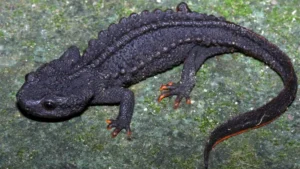
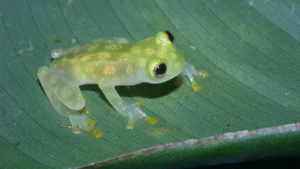

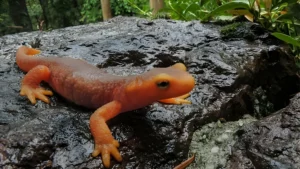

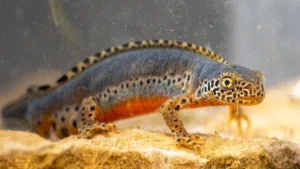
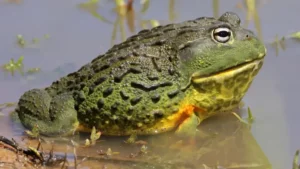
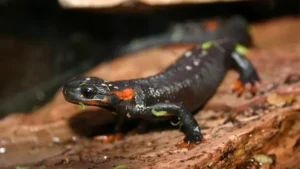

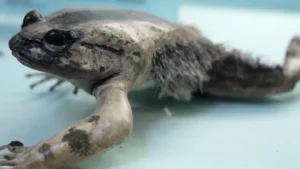

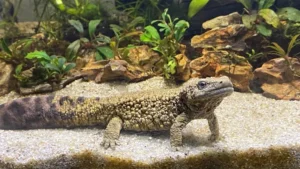
Leave your comment